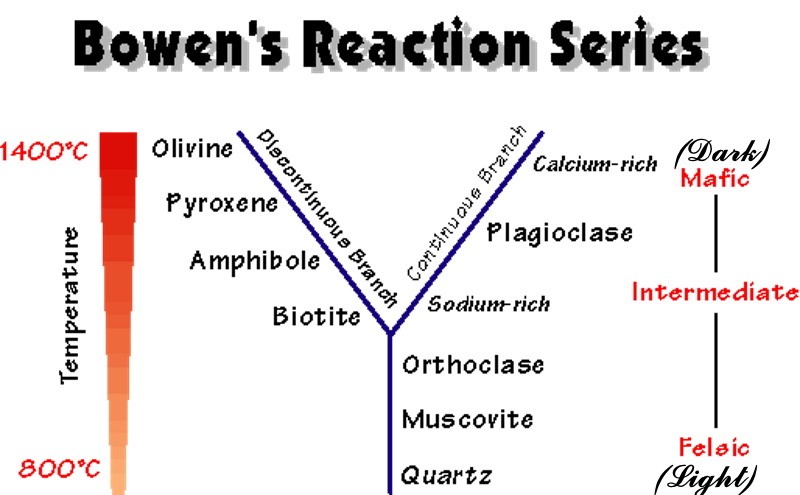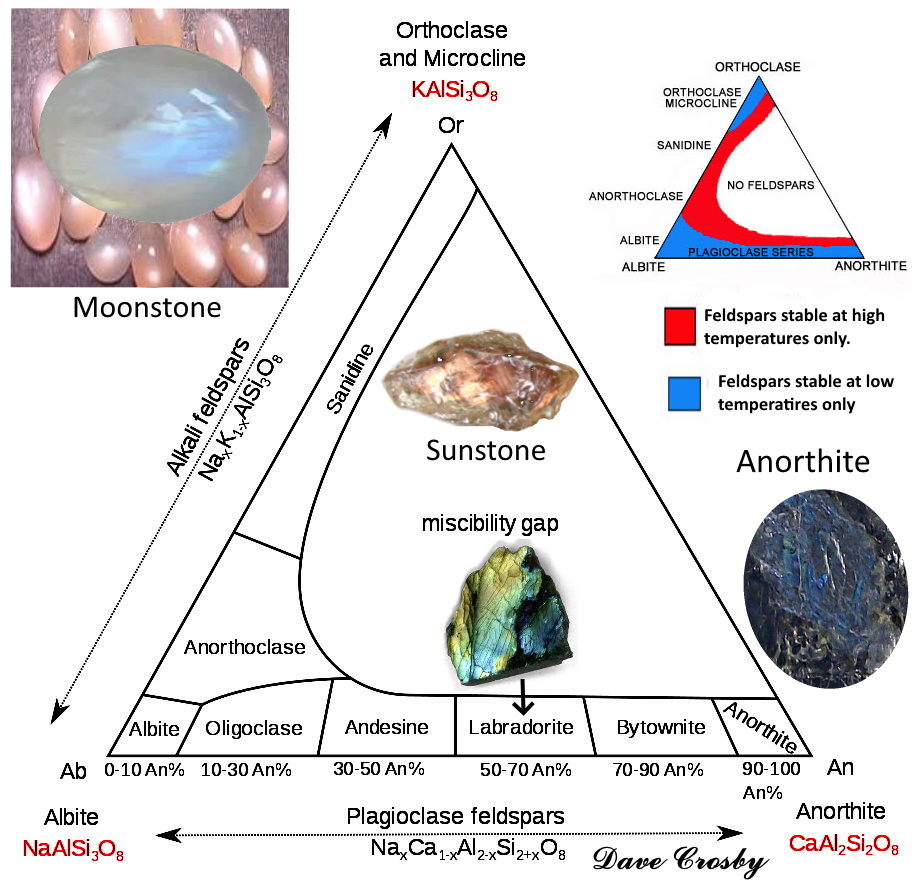|
|
Post by 1dave on May 5, 2022 14:54:39 GMT -5
I've been working on this subject, starting and stopping in a dozen other threads that never got completed. I'm tossing it out here so Tommy can butcher it and use it as he wishes in his new web venture. The Feldspars are the most common (and UNCOMMON) CRYSTALS ON EARTH! Made of silicon, aluminum, sodium, calcium, potassium or barium, they make up about 60% of the Earth's crust. They have Mohs Hardness: 6.0 to 6.5 so they make decent gemstones. Feldspars, especially plagioclase feldspars, are not very stable at the earth's surface due to their high formation temperature. They are all Igneous Rocks! Their being out of their original formative environment causes a lack of stability, and is why feldspars are easily weathered to clays if they long remain on the surface. One of the most diagnostic properties of feldspar is its two directions of cleavage that usually intersect at or close to ninety degrees. Light easily penetrates their structures and internally reflect inside, giving therm all a vitreous luster that is often pearly on cleavage faces.  8 elements make up 99% of all rocks. The 6 of Those in feldspars have a red dot by them and a red * inside the graph. When impacts or volcanoes melt parts of the earth, Norman Bowen explained what happens. At specific temperatures igneous minerals begin crystalizing. Lavas become olivine, then pyroxine, then Mafic (sounds complicated! (Snicker) It just means dark) plagioclase, etc.  There are so many variations it is easy to get confused.   But they are worthy of becoming good friends. |
|
Tommy
Administrator 
Member since January 2013
Posts: 12,930
|
Post by Tommy on May 5, 2022 15:28:26 GMT -5
I've been working on this subject, starting and stopping in a dozen other threads that never got completed. I'm tossing it out here so Tommy can butcher it and use it as he wishes in his new web venture. Haha thanks 1dave - remember, without someone doing the butchering we would never be able to enjoy a Filet Mignon  |
|